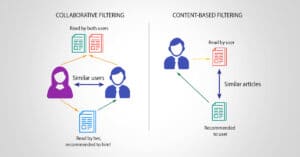
This is the first post in a two-part series about cookie-free marketing attribution. The second part lives here.
I’m taking a break from AI to discuss a favorite topic of mine: measuring digital marketing’s impact without tracking consumers. A combination of new privacy policies and marketing platforms’ longstanding refusal to share consumer-level data makes it nearly impossible to measure which people saw which ads.
This means that the days of holistic path analyses and calculating Shapley values in house are well and truly over. That’s a scary thought for many, but it doesn’t have to be.
Back to the future
My first job in private industry was at Nielsen, of the Nielsen ratings fame. I didn’t measure what people watched, though. Instead, I was part of a small team that helped big Consumer Packaged Goods companies (think Johnson & Johnson, Kimberly Clark, Proctor & Gamble) understand whether their marketing campaigns helped sell more paper towels or baby wipes or soft drinks.
Even though it’s gotten easier to track which households saw which TV ads (thanks OTT), that wasn’t the case ten years ago. And our clients relied heavily on TV. What’s more, a lot of them used other forms of legacy media like print magazines and billboards that remain stubbornly difficult to track even today.
Despite the challenges involved, we managed to figure out which dollars were generating sales, which channels merited investment and which ones were wasted money. John Wanamaker would’ve been pleased.
The key? As a PhD advisor once told me: embrace the uncertainty.
Stop being an accountant. Start being a scientist.
The techniques I used at Nielsen (which apply just as well to digital marketing as they do to legacy media) completely sidestep the issue of tracking which consumers saw which ads. Rather than following an individual around the internet, this approach compares aggregate marketing data to aggregate sales numbers, letting correlation-driven inferential statistics do the heavy lifting.
There’s a fair number of considerations and complications, but the basic idea is straightforward:
- Tie sales and marketing numbers to a specific time and place.
- Assess whether higher sales figures tend to co-occur with more marketing.
- Spend more money on channels that generate sales.
As with so many things, the devil’s in the details, but the general process is just as simple as it sounds. All that’s required is a willingness to let go of the idea that you can link a particular person to a particular advertisement (or set of advertisements). Instead, each conversion has a probability of interacting with a given campaign; partial credit is the name of the game.
Surprisingly to some, it’s possible to build an effective, efficient marketing program with probabilities and partial credit. I’ve used the approach described here to calculate campaign-level ROI, help clients make budgeting decisions, and test new campaigns’ effectiveness.
Snappy conclusion
Inference-based attribution isn’t new, but that’s reassuring: these methods have stuck around because they’re effective. If done right, they can provide an incredibly valuable holistic perspective on whether and to what extent each marketing campaign affects a business’s top-line numbers.
If attribution’s something you’re struggling with it, feel free to get in touch. I’d love to help you discover the magic of cookie-free attribution. And if this post left you wanting more, check out the follow-up, where I walk through the process in a bit more detail.





